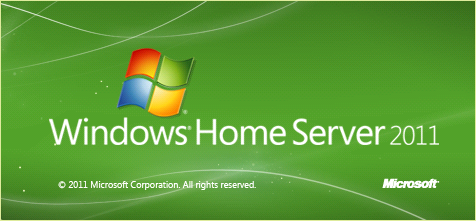File Server Builder's Guide
by Zach Throckmorton on September 4, 2011 3:30 PM ESTWhile the focus of this guide is hardware, it's worth first briefly discussing home file server operating system options.
Windows Home Server 2011
Microsoft launched its latest version of WHS earlier this year. It can regularly be found for $50 or less when it's on sale. Of all the file server operating systems available, WHS2011 is the easiest to both set up and administer for users familiar with the Windows series of desktop operating systems and less familiar with Unix or Linux. If you've installed and configured Windows XP, Vista, or 7, you can install and configure WHS2011 with a minimal (or even no) extra research. The downside to this ease of use for the home file server novice is, of course, cost - WHS2011 is not free.

FreeBSD and FreeNAS
FreeBSD is, of course, free. Because it is a Unix operating system, it requires time and effort to learn how to use. While its installation uses an old text-based system and its interface is command line-based, you can administer it from a Windows PC using a terminal like PuTTY. I generally do not recommend FreeBSD to users unfamiliar with Unix. However, if you are intrigued by the world of Unix and are interested in making your first foray into a non-Windows OS, setting up a file server is a relatively easy learning experience compared to other Unix projects.
FreeNAS is based on FreeBSD but is built specifically to run as a file server. It features an intuitive, easy to use web interface as well as a command line interface. Both FreeBSD and FreeNAS support ZFS, a file system like NTFS and FAT32. ZFS offers many benefits to NTFS such as functionally (for the home user) limitless file and partition size caps, autorepair, and RAID-Z. Though it is aimed more at enterprise and commercial users than consumers, Matt wrote an article that has lots of useful information about ZFS last year.
Ubuntu and Samba
Ubuntu is arguably the easiest Linux distribution for Windows users to learn how to use. Unsurprisingly, then, it has the largest install base of any Linux distro at over 12 million. While there is an Ubuntu Server Edition, one of the easiest ways to turn Ubuntu into a home file server is to install and use Samba. (Samba can be used on not only Ubuntu, but also FreeBSD.) Samba is especially useful if you'll have mixed clients (i.e. Windows, OS X, and Unix/Linux) using your home file server. Though FreeNAS certainly works with Windows clients, Samba sets the standard for seamless integration with Windows and interoperability is one of its foci.

Succinctly, WHS2011 is very easy to use, but costs money. Installing Ubuntu and Samba is not particularly difficult, and even if you've never used any type of Linux before, you can likely have a Samba home file server up and running in a morning or afternoon. FreeNAS is arguably a bit more challenging than Ubuntu with Samba but still within a few hours' grasp of the beginner. FreeBSD is potentially far more capable than WHS, Ubuntu/Samba, and FreeNAS, but many of its features are mostly irrelevant to a home file server and its learning curve is fairly steep. When properly configured, all of the above solutions are sufficiently secure for a typical home user. Most importantly, all of these options just plain work for a home file server. An extensive comparison of each OS's pros and cons in the context of a home file server is beyond the scope of this article, but now that we've covered a few OS options worth your consideration, let's get to the hardware!










152 Comments
View All Comments
imaheadcase - Thursday, August 21, 2014 - link
I know this is a old old post. But can Anand do a updated one of this?evangelicaloutreach - Thursday, February 6, 2020 - link
https://www.evangelicaloutreach.org/backslider.htmhttps://www.evangelicaloutreach.org/eternal-securi...
https://www.evangelicaloutreach.org/eternal-securi...
https://www.evangelicaloutreach.org/getsaved.htm
https://www.evangelicaloutreach.org/fatima.htm
https://www.evangelicaloutreach.org/antichrist.htm...
https://www.evangelicaloutreach.org/post-tribulati...
https://www.evangelicaloutreach.org/dancorner.htm
https://www.evangelicaloutreach.org
https://www.evangelicaloutreach.org/sinuntodeath.h...
https://www.evangelicaloutreach.org/eternallife.ht...
https://www.evangelicaloutreach.org/calvinismrefut...
https://www.evangelicaloutreach.org/charles-stanle...
https://www.evangelicaloutreach.org/joseph-prince-...
https://www.evangelicaloutreach.org/ouija2.htm
https://www.evangelicaloutreach.org/white-witchcra...
https://www.evangelicaloutreach.org/occult.htm
https://www.evangelicaloutreach.org/spiritual-deat...
https://www.evangelicaloutreach.org/newconverts.ht...
https://www.evangelicaloutreach.org/salvation-quiz...
https://www.evangelicaloutreach.org/christian-poem...
https://www.evangelicaloutreach.org/plan-of-salvat...
https://www.evangelicaloutreach.org/grace-or-works...
https://www.evangelicaloutreach.org/galatianism.ht...
https://www.evangelicaloutreach.org/got-questions....
https://www.evangelicaloutreach.org/hereticDavidJS...
https://www.evangelicaloutreach.org/hereticDavidJS...
https://www.evangelicaloutreach.org/jehovahs-witne...
https://www.evangelicaloutreach.org/nwt.htm
https://www.evangelicaloutreach.org/who-is-michael...
https://www.evangelicaloutreach.org/grace-or-works...
https://www.evangelicaloutreach.org/christian-beli...
https://www.evangelicaloutreach.org/etlicense.htm
https://www.evangelicaloutreach.org/printfreetract...
https://www.evangelicaloutreach.org/witnessing.htm
https://www.evangelicaloutreach.org/dan-corner-the...
https://www.evangelicaloutreach.org/mary-of-the-bi...
https://www.evangelicaloutreach.org/religious-dece...
https://www.evangelicaloutreach.org/miracles.htm
https://www.evangelicaloutreach.org/sermons.htm